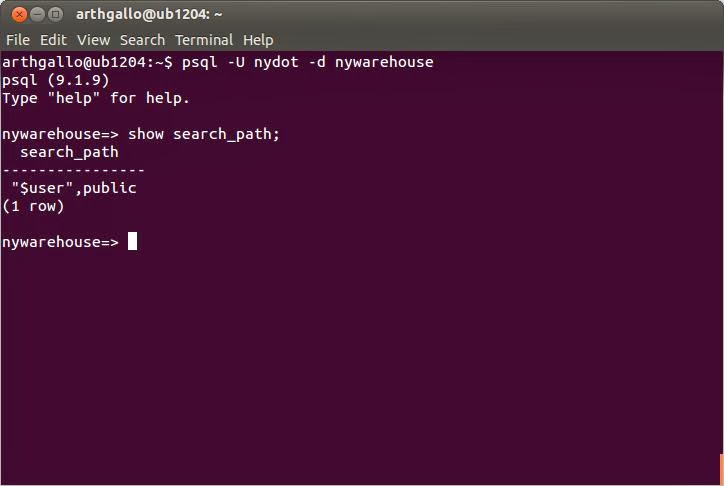

- Postgresql create database bommand line how to#
- Postgresql create database bommand line full#
- Postgresql create database bommand line password#
- Postgresql create database bommand line windows#
Use \x (X for eXpanded listing) to control To get additional information on the space consumed by database tablesĪnd comments describing those tables, use \l+: postgres=# \l+ \l+ List databases with size, tablespace, and description

Name | Owner | Encoding | Collate | Ctype | Access privileges To get a list of all databases: postgres=# \l Some of these databases (and the tables within) are updated automatically by PostgreSQL as you use them. A database is a set of tables, information about those tables, information about users and their permissions, and much more. What most people think of as a database (say, a list of customers) is actually a table. You’ll get help on just that item: Command: DROP TABLEĭROP TABLE name
Postgresql create database bommand line how to#
Quitting pqsqlīefore we learn anything else, here’s how to quit psql and return to the operating system prompt. You’ll use psql (aka the PostgreSQL interactive terminal) most of all because it’s used to create databases and tables, show information about tables, and even to enter information (records) into the database.
Postgresql create database bommand line password#
# Password when asked is csizllepewdypieiib $ psql -U doadmin -h production-sfo-test1-do-user-4866002-0.db. -p 25060 -d mydb I think DO generated this for me, or maybe PostgreSQL. # -d is the name of the database to connect to. # -p is the port where the database listens to connections. # -U is the username (it will appear in the \l command) # -h is the name of the machine where the server is running. This worked to connect to Postgres on DigitalOcean
Postgresql create database bommand line windows#
On Windows it might look like C:\Program Files\PostgreSQL> but Windows prompts are also configurable. Prompts are configurable so it may well not look like this. The $ starting a command line in the examples below represents your operating system prompt.
Postgresql create database bommand line full#
This section isn’t a full cheat sheet for psql. Knowing how to perform these operations on the command line means you can script them,Īnd scripting means you can automate tests, check errors, and do data entry on the command line. You can do some of them through a visual user interface, but that’s not covered here. Many administrative tasks can or should be done on your local machine,Įven though if database lives on the cloud. You can follow through the examples and the output is shown as if youĭid type everything out.

If you don’t have access to a live PostgreSQL installation at the moment we still have your back. Reference pointing to the official PostgreSQL documentation.Sending your feedback to shows how to do the following at the psql prompt: If you have any complaints or suggestions please let me know by

Well written and thorough, but frankly, I didn’t know where to start reading. The PostgreSQL documentation is incredibly View on GitHub Pages or directly on GitHub What database administration tasks, but aren’t familiar with how to I assume you’re familiar with the command line and have a rough idea about Quick reference for the absolute least you need to know about psql. Uses psql and you want to learn the absolute minimum to Now what? I assume you’ve been given a task that Postgres psql command line tutorial and cheat sheet


 0 kommentar(er)
0 kommentar(er)
